Solar eclipses occur 2-3 times a year, and each time they become one of the most interesting events for astronomy lovers. Today we understand perfectly well why the celestial body disappears for a short time: the Moon moves in orbit between the Sun and the Earth, and its shadow falls on the surface of our planet. But thousands of years ago, science was not so well developed, so people could not explain this phenomenon as anything other than the tricks of the gods. Some peoples believed that the Sun stopped shining due to divine wrath, and tried to appease it with sacrifices. In other civilizations, people were sure that the Sun was being eaten by a huge monster, and in order to scare it away, they loudly beat the drum. This is not all the most interesting that can be told about the attitude of ancient peoples to solar eclipses.
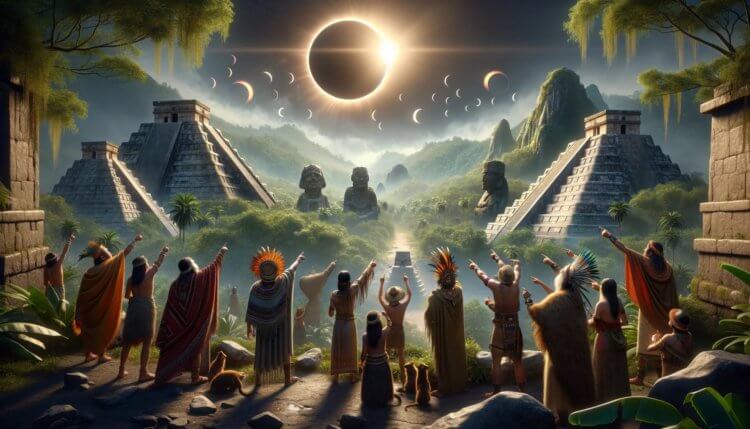
Ancient civilizations believed that solar eclipses are messages from the gods
Contents< /p>
- 1 Solar eclipses in ancient times
- 2 Ancient legends about solar eclipses
- 2.1 Solar eclipses in Ancient China
- 2.2 Solar eclipses among the Incas and Mayans
- 2.3 Scandinavian legend about a solar eclipse
< li>2.4 Eclipses of the Sun in Ancient Egypt
- 2.5 Solar eclipses in Hinduism
< h2>Solar eclipses in ancient times
The authors of Smithsonian Magazine spoke about how ancient people perceived solar eclipses. They cited as an example the words of astronomer Bradley Schaefer, who explained that astronomical phenomena were interpreted by people as signs of the gods.
Thousands of years ago, people did not know that the Earth was round in shape , The Moon is the earth's satellite, and the Sun is a star. Imagine you are a farmer and the sky suddenly becomes dark. “You could consider this only the tricks of the gods,” the scientist explained.
Ancient legends about solar eclipses
Many ancient peoples sincerely believed that the Sun and Moon were gods. If a celestial body suddenly disappeared in broad daylight, this was immediately perceived as a bad sign. Due to regular solar eclipses, frightening myths and legends arose.
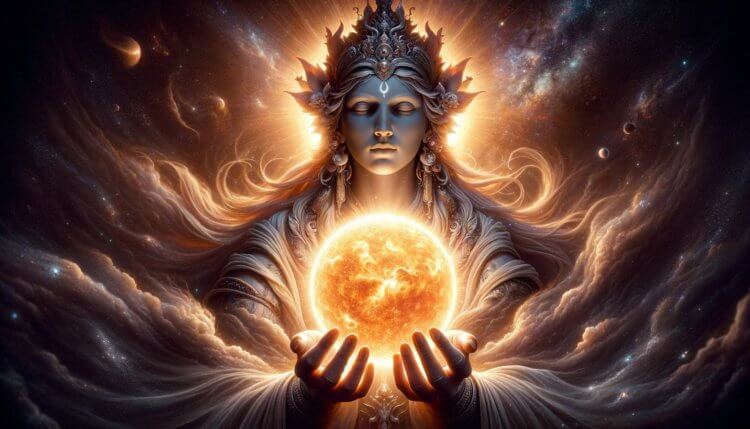
Many myths and legends have been invented about solar eclipses
Solar eclipses in Ancient China
For example, in ancient China it was believed that during an eclipse the Sun was swallowed up by a giant dragon. To scare away the huge monster, people beat drums loudly. A few minutes later the Sun returned, and the people of China were sure that this happened thanks to their ritual.

Residents of Ancient China believed that during an eclipse the Sun is absorbed by a huge dragon
Solar eclipses among the Incas and Mayans
Thousands of years ago, peoples such as the Incas, Mayans, and Aztecs lived in South America and so on. The Incas considered the disappearance of the Sun to be the wrath of the god Inti, so they tried to appease him with the help of sacrifices. The priests decided what sacrifice to make so that the luminary would return again. Sometimes the choice fell on the people, and the people performed bloody rituals.
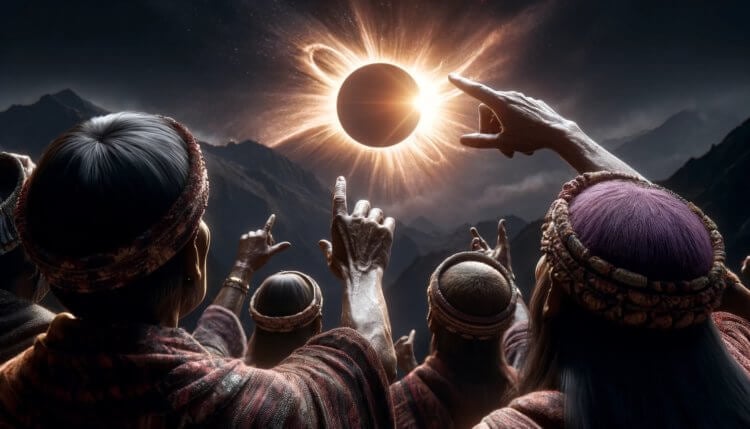
The Incas associated solar eclipses with the tricks of the god Inti
Read also: How the ancient Mayan tribes predicted solar eclipses – the answer is simpler than you think
Scandinavian legend of a solar eclipse
The Scandinavian Vikings believed that the star was disappearing because the huge wolves Skoll and Hati were trying to eat it. They are the sons of the even greater wolf Fenrir, who must catch up and eat the Sun during the great battle between the gods and their opponents. Of course, the Scandinavian myths sound much more complex, and this is a very brief summary of what is written in the Elder Edda.
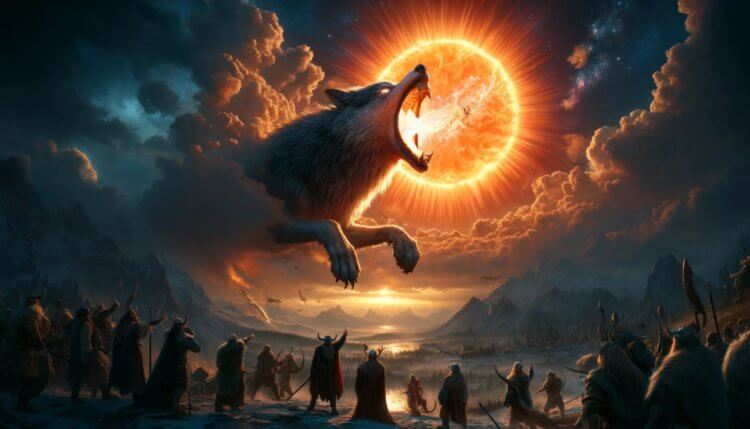
The Vikings believed that during eclipses an epic battle takes place in the sky
Eclipses of the Sun in Ancient Egypt
In Ancient Egypt, people believed that every night the sun god Ra fights with the serpent Apep, who wants swallow the Sun and plunge the world into darkness. The Egyptians considered solar eclipses to be a temporary victory for the monster. This legend is known thanks to the drawings on the walls of ancient Egyptian temples.
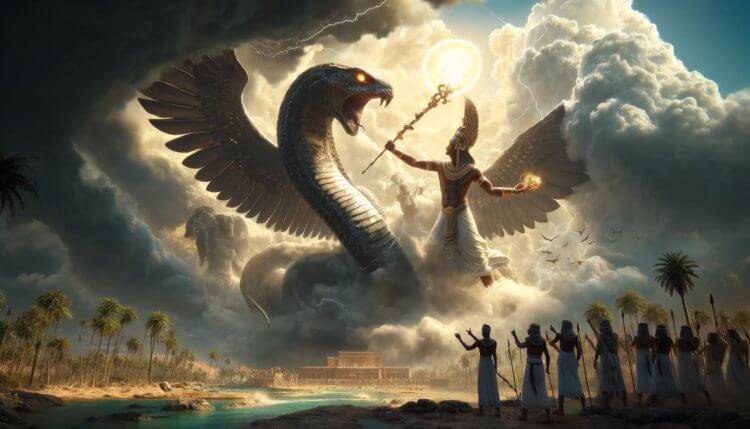
In Ancient Egypt, people also believed that there was a battle in the sky
Be sure to reading:A selection of scientific photographs that will surprise everyone
Solar eclipses in Hinduism
In ancient times, the inhabitants of India believed that the Sun disappeared in the mouth of the demon Rahu. In Hindu art he is depicted as a dragon without a body, riding a chariot with eight black horses.
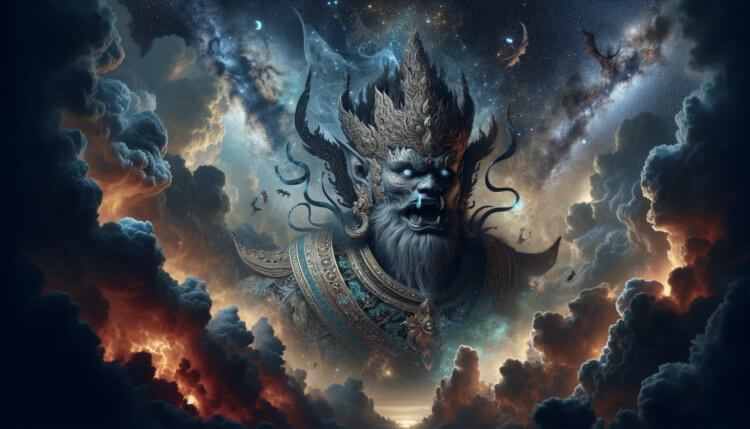
In India, eclipses were associated with the demon Rahu
Everyone should know this:
strong> Who was the very first scientist in human history
Study of solar and lunar eclipses
Of course, throughout the history of mankind, people have seen thousands of solar eclipses. But before the invention of writing, they could not leave any records about them.
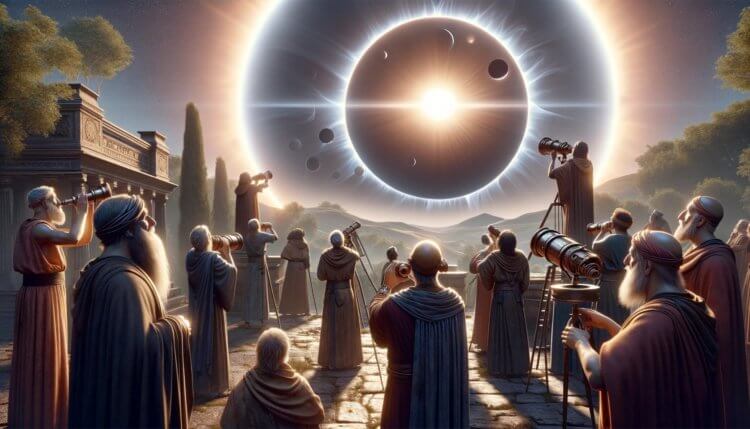
Over time, humanity learned the true cause of solar eclipses
However, in the US state of New Mexico there is a Chaco Canyon with carvings in the shape of a circle. Scientists are inclined to believe that ancient people depicted the eclipse they saw in 1097 in this way. Also, the residents of this place saw eclipses in subsequent years. Around the same time, they moved to other places – perhaps they feared the wrath of the gods and ran away.
This [solar eclipse] could be the kind of event that makes you say, “Okay, this is a bad place, we need to move,” explained astronomer Tyler Nordgren.
The first scientific explanation for solar eclipses was given only in the 5th century BC by the ancient Greek philosopher Anaxagoras. He became the first person to realize that solar and lunar eclipses are somehow related to shadows. There is also a version that the ancient Greek mathematician Thales of Miletus was the first to explain the nature of solar eclipses.
Did you know that we have a chat on Telegram? Come in and see what's going on there!
Solar and lunar eclipses are well studied today, but scientists are still revealing new details. For example, we recently learned why clouds dissipate in the sky during a solar eclipse. Be sure to read to broaden your horizons!